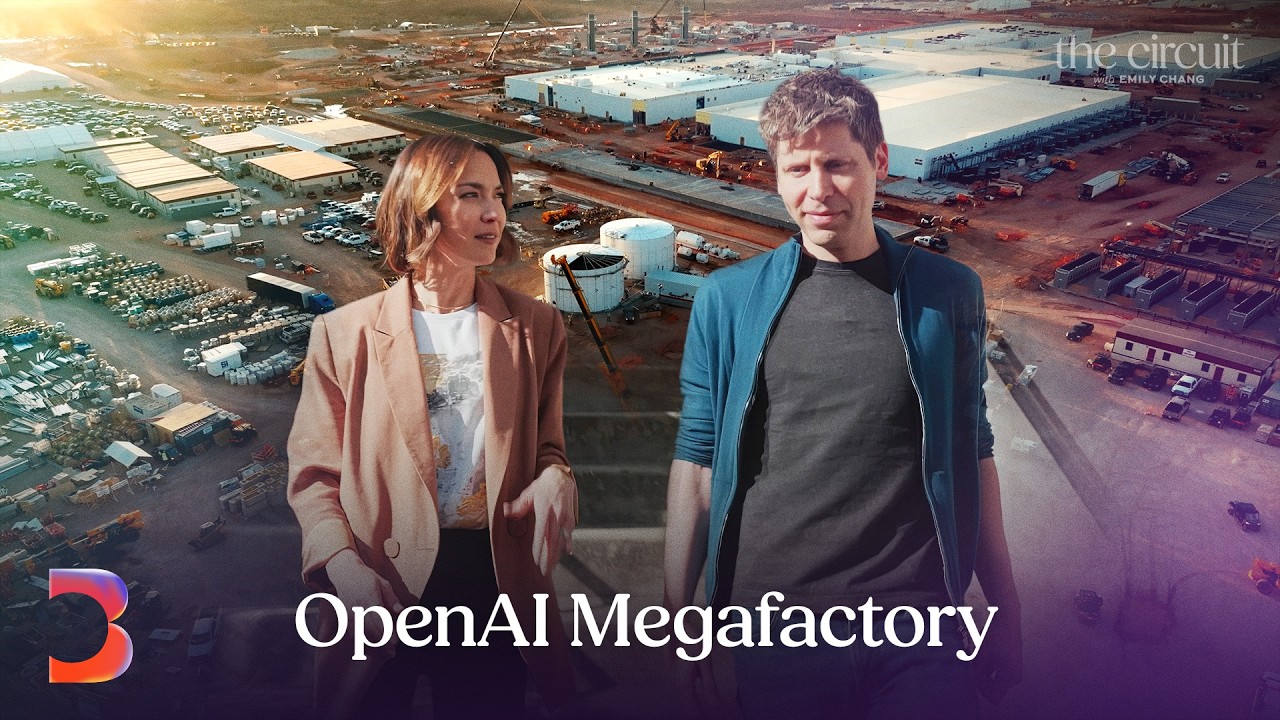The video showcases OpenAI’s Stargate Megafactory in Abilene, Texas, a massive AI infrastructure project aimed at accelerating AI development and achieving artificial general intelligence through the deployment of hundreds of thousands of GPUs in one of the world’s largest data centers. It highlights the project’s scale, environmental considerations, geopolitical implications, and the broader race among tech giants to dominate AI capabilities, while also reflecting on the uncertainties and potential of AI’s future.
The video explores the ambitious and rapidly developing Stargate project, a massive AI infrastructure initiative led by OpenAI in partnership with SoftBank, Oracle, and other stakeholders. Located in Abilene, Texas, the project involves constructing eight large buildings housing hundreds of thousands of GPUs, making it one of the world’s largest AI data centers. The goal is to create a supercharged computing environment to accelerate AI development, particularly aiming to achieve artificial general intelligence (AGI). The project is part of a broader global race among tech giants like Microsoft, Google, Meta, and Amazon to dominate AI capabilities through extensive infrastructure investments.
Construction of Stargate began in June 2024 on a previously barren field, transforming it into a sprawling campus with thousands of workers and heavy machinery. The site is designed to hold up to 400,000 chips, with the entire build expected to be completed by mid-2026. The project is driven by the urgent need for immense computational power to support increasingly capable AI models, which require vast energy and water resources. To address environmental concerns, Crusoe, one of the key partners, has implemented closed-loop cooling systems to minimize water usage, though energy consumption remains a significant challenge.
The video highlights the scale of the infrastructure, including the deployment of advanced Nvidia Blackwell GPUs and the development of a dedicated power capacity exceeding one gigawatt—enough to power hundreds of thousands of homes. The rapid growth of AI applications, such as ChatGPT and image generation tools, has led to surges in demand that current data centers struggle to handle. This has prompted a global push to build more AI-specific data centers, with Abilene positioned as a strategic hub due to its abundant, low-cost renewable energy. However, concerns about the environmental impact and the sustainability of such large-scale energy consumption are also discussed.
The narrative delves into the economic and geopolitical implications of Stargate, emphasizing the intense US-China competition in AI development. The supply chain for advanced chips and materials is highly international, raising risks related to tariffs, trade restrictions, and geopolitical tensions. The project exemplifies a broader opportunity for the US and allied countries to develop independent, resilient AI infrastructure, potentially decentralizing from traditional centers like Virginia. Local communities, like Abilene, are eager to benefit economically from the influx of jobs and investment, though the actual number of long-term jobs remains uncertain.
Finally, the video reflects on the broader uncertainties surrounding AI’s future, including questions about profitability, environmental impact, and the true potential of these technological advancements. While the current boom in AI infrastructure appears robust, experts warn of possible downturns or “AI winters.” Nonetheless, the long-term investments by major corporations suggest that the AI revolution is poised to continue, with the promise of transformative scientific, economic, and societal progress. The narrative concludes with a philosophical note on the unknown future of AI, likening it to a wormhole—an unpredictable but potentially beneficial journey into what lies ahead.
